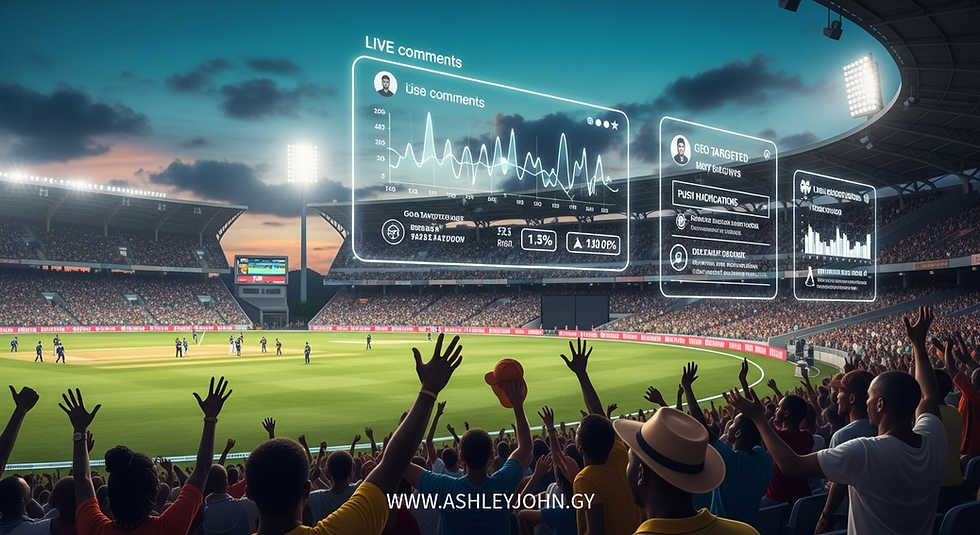Why Negative Space Matters in Marketing: Breaking Guyana’s Cycle of Busy Ads
- Ashley John
- Sep 16
- 2 min read

In Guyana, we push the limits of how much we can cram into a single communication. A department store TV spot will squeeze an entire inventory into sixty seconds. Audiences are choked with more information than they can possibly absorb. By the end, they’re left gasping, the main message buried with them , somewhere in the noise. Cue the funeral music
What needs to die is the instinct to add more; more text, more images, more logos etc. The assumption is that more content equals more impact when really; less is more. This echoes Alex White’s view that “the power of design often lies not in what is added, but in what is withheld.” Deliberate emptiness is a tool that sharpens focus, builds rhythm, and elevates meaning.

ENet’s “#SWITCHED” campaign
To promote number portability (keeping your number and switching networks) ENet demonstrated this principle and put it in practice. Each piece places the customer at the center against a stark, uncluttered background. There are no props, layered graphics, or competing messages. Instead, the negative space helps to isolate the subject and intensifies the testimonial. The design breathes, allowing the bold “#SWITCHED” typography and the orange-highlighted “E” to command attention. White’s observation that space is an active design element is embodied here: silence amplifies the voice of each customer.
How design principles impact content marketing
Clarity wins in a crowded landscape. By stripping away noise, the message is transferable and adaptable across multiple platforms. On social media, the negative space stops the scroll; on billboards, the minimal layout cuts visual clutter. These were supplemented by a video with one featured customer telling her story. The design elements created a premium, intentional feel across platforms. This alignment reinforced recognition and cohesion throughout the campaign.
Why does it work?
The visual imagery resists the urge to overwhelm and speaks with precision and authority. The emptiness signals confidence that the brand does not need excess frills to be noticed. It prioritises the customer’s story while ENet remains subtle.
In Guyana’s context, this approach challenges a long-standing habit of “busy” communications. Perhaps it worked back in the day but it will be lost in this new age of modern media.
These examples show that the real impact comes from subtraction, not addition. Alex White is right: space is not absence, it is emphasis. And in Guyana’s evolving communications landscape, the brands that embrace emptiness will be the ones audiences truly see.















Comments